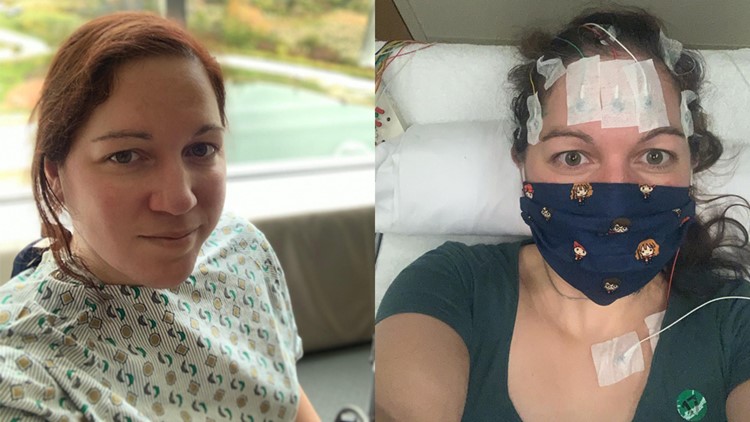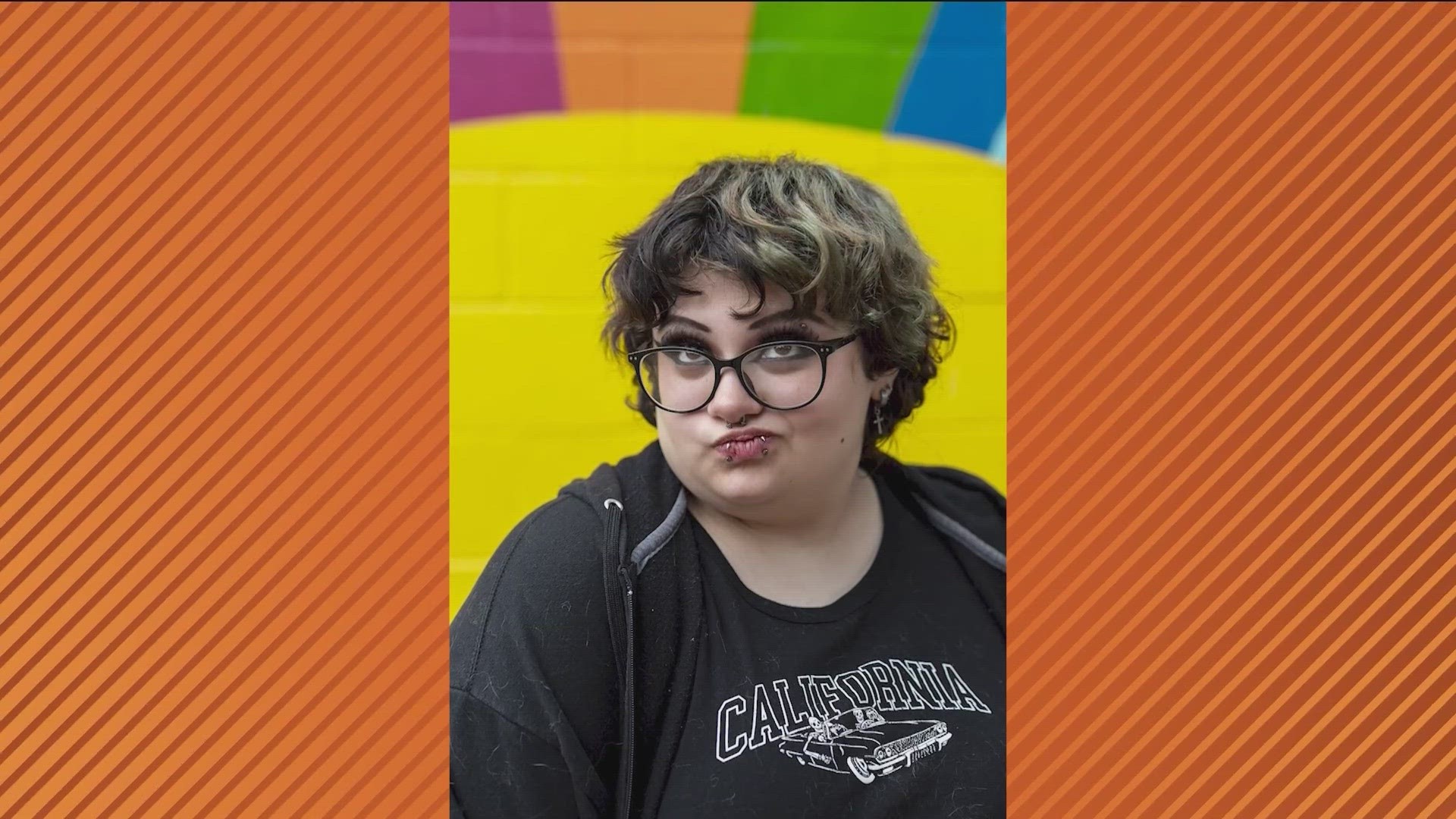It’s been eight months and in that time Ohio has seen almost 250,000 COVID-19 cases and more than 5,200 deaths. Another number to mention, though, is recoveries.
More than 189,000 Ohioans have had COVID and beat it.
Most of those recoveries, for people not hospitalized, on average, get better in 14 days, according to health experts.
“I am on day 219,” Kelly Gleine said in late October.
For Gleine, 38, it’s been almost eight months. It started on March 24. She remembers that day because it was the same day her work shut down due to COVID.
“By that night I had a 104 fever,” she said. “I was sweating through my clothes, my sheets, everything.”
A virtual visit with a doctor a couple of days later diagnosed her with pneumonia. She was never tested for COVID. She was given an inhaler, medicine and was told to rest.
But, it never got better.
“Getting up to go to the bathroom was as if I had just tried to run a marathon,” she said.
A second doctor scheduled a COVID test. It was negative. At the beginning of the pandemic, testing wasn’t what it is today and the doctor told Gleine about a 60 percent false-negative rate. Now, seven months later, she’s had more than a dozen COVID tests.
“I’ve had 13 of them, so far,” she said.
And with her tests come a laundry list of specialists.
“I have a primary care doctor, a pulmonologist, a cardiologist, a disease specialist, bromatology, endocrinology, neurology…I’ve had physical therapy,” she said.
Because of COVID, Gleine had partially collapsed lungs for months. She still has scarring on her lungs. Some of it could heal, according to doctors, while some of it might not. As for doctor visits and testing, Gleine says she averaged up to three appointments a week.
“There was one week that I had…I think it was 22 vials of blood taken in a week,” she said.
She says calcification was found in the arteries of her heart that was never there before. She also now has arrhythmia, which she never had before. She says before COVID, she had a clean bill of health with no pre-existing conditions. Her main symptoms are poor blood circulation, numbness in her hands and feet and loss of taste and smell. She’s tired all the time having days where she sleeps 20 hours a day.
Even with symptoms and with second and third opinions she still has no answers.
“They pretty much are saying you’re getting better, but they’re saying we don’t know how much damage it’s actually done,” she said.
“They really showed that long-haulers of COVID-19 symptoms are far more numerous than what was currently listed on the CDC’s website,” Dr. Joseph Gastaldo said.
Gastaldo is the medical director of Infectious Diseases with OhioHealth. Cases like Gleines, or what he calls “Post COVID syndrome,” or “long-haulers” – he’s seen.
“I’ve seen many patients who have had COVID-19 and they get over the symptoms of what brought them into the hospital,” he said. “They subjectively feel better, they’re out of isolation but they still have lingering symptoms.”
Part of the issue is that we as a country and those in the medical field are still learning about COVID, according to Gastaldo. Gleine says some of her physicians, while treating her symptoms, have all but given up hope on an endgame.
“A lot of healthcare providers really don’t know what to do for people who have lingering symptoms,” Gastaldo said.
While lingering symptoms continue for Gleine she says mentally it’s also taken a toll, like having to be away from her 12-year-old son.
“I was quarantined from him for nine-and-a-half weeks at the beginning,” Gleine said, emotionally. “I spent my Mother’s Day through a door. I couldn’t be anywhere near him.”
Now, months into it, she still can’t really do anything with him.
“We can’t go out on walks like we normally would,” she said. “He wants to go bike riding with me, I can’t do it. I mean, I can walk about a quarter-mile and then I have to use an inhaler and I have to stop and that’s it. And then I have to go home and I sleep.”
She also hasn’t seen friends or family. She can’t go anywhere but to the pharmacy or grocery store. As a way to let people know how she’s been she’s taken to Facebook.
Every day a snapshot. Her symptoms. Her doctor visits. Her struggles. Her triumphs. Every day.
Little did she know this would become essential for her recovery.
“I didn’t intend on updating every day and then I found that I literally couldn’t remember things,” she said. “So, then it literally became a diary.”
From March to May, she says the details are fuzzy in her memory. Facebook became a way to track symptoms. Still, she says not everything is included.
“A lot of the more emotional stuff of, like, how scared I was…that’s not there,” she said. “It didn’t need to be.”
She also follows a Facebook group specifically for those who have lived with COVID and its symptoms long-term. If anything, she says it offers her more hope than has ever been given by medical professionals. She says every so often people will say they’re feeling better or they’ve been able to get outside or do something they hadn’t in a long time.
“It’s encouraging to see that there are people that are getting better,” she said. “And that’s all I’ve got at this point.”
Dr. Gastaldo says if you have symptoms you should still be evaluated. Those who have had COVID, or still do, are prone to blood clots, chest pains, bacterial infections or chest discomfort with heart inflammation. However, he says even with symptoms, typically long-haulers aren’t contagious to anyone else after that initial quarantining period.
“Most people eventually get back to their baseline with previously described post viral syndromes,” Gastaldo said. “When it comes to post-viral syndromes related to COVID-19 or what’s being called ‘long-haulers’ it’s still an area where we have much to learn.”
In the meantime, Gleine hopes people will take precautions.
“You don’t want [COVID],” she said. “At all. This is not a joke. This is not something you want.”
Even though she might not be contagious Gleine says she’s afraid to come out of the house for fear of catching something new. Even though she’s allergic to the flu shot, this year she was encouraged to get one and did, because without it – it could be fatal.
“My doctor flat-out said if I get sick, if it is something bad, I could die,” she said. “So, wear masks. Seriously.”
It’s easy to think and even easier to believe that COVID is on its way out. However, there are people among us, like Gleine, who hope what’s even easier to believe is that taking simple precautionary measures can save a life.



